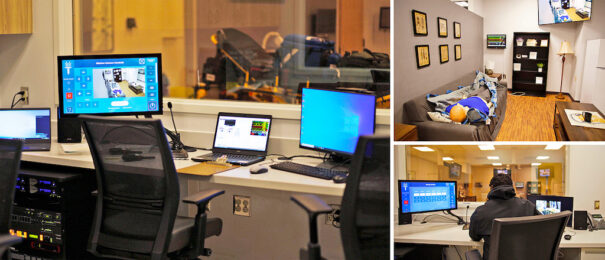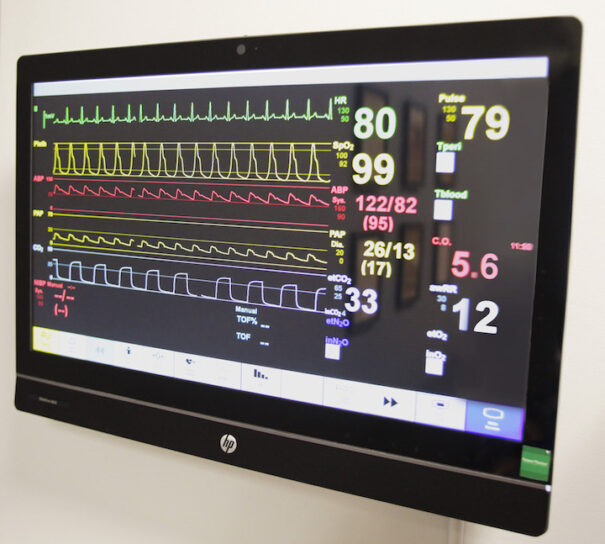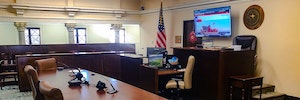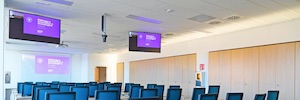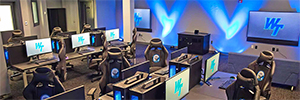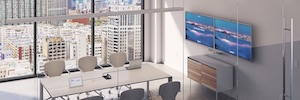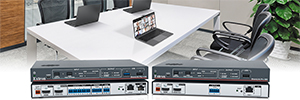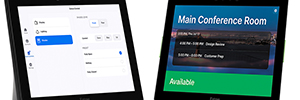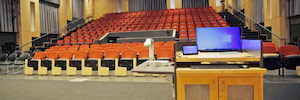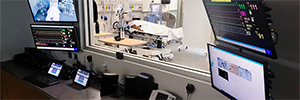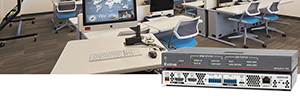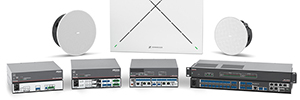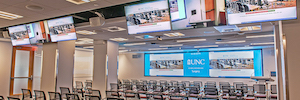Extron contribuye a la formación en las salas de simulación de Wake Tech
Los sistemas de conmutación, distribución, control AV y audio de Extron configuran las salas de simulación de servicios de emergencia médicos (Who) para formar a los técnicos en este campus norteamericano.
Wake Technical Community College, en Carolina del Norte (Of .u.), es la institución comunitaria más grande del estado, a la que acuden unos a 70.000 students. In Perry Health Sciences Campus, los alumnos realizan cursos para su certificación como técnicos de emergencias sanitarias (TES) y paramédicos.
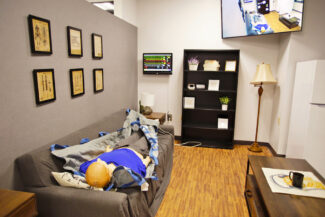 El curso incluye formación intensiva basada en escenarios que utilizan equipamiento de simulación de última tecnología para dominar las destrezas prácticas y el pensamiento crítico como elementos vitales en el protocolo de intervención, diagnóstico y tratamiento de pacientes en situaciones de emergencia y trauma.
El curso incluye formación intensiva basada en escenarios que utilizan equipamiento de simulación de última tecnología para dominar las destrezas prácticas y el pensamiento crítico como elementos vitales en el protocolo de intervención, diagnóstico y tratamiento de pacientes en situaciones de emergencia y trauma.
The so -called Health Sciences Building B incluye una sala de simulación de servicios de emergencia médicos (Who) preparada como si fuera un apartamento: con cocina, sala de estar, habitación y baño con maniquíes médicos de alta fidelidad que los instructores controlan desde una sala de control adyacente.
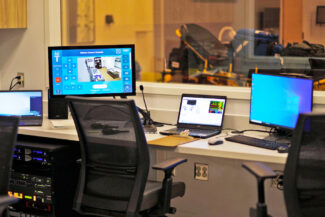 Los instructores crean escenarios de emergencias, los supervisan, dirigen y hacen un análisis crítico de las acciones de los estudiantes de TES y paramedicina a través de una ventana de observación directa, así como del vídeo y audio, en directo o grabado, que se transmite desde múltiples cámaras.
Los instructores crean escenarios de emergencias, los supervisan, dirigen y hacen un análisis crítico de las acciones de los estudiantes de TES y paramedicina a través de una ventana de observación directa, así como del vídeo y audio, en directo o grabado, que se transmite desde múltiples cámaras.
Besides, el vídeo y el audio de las sesiones de simulación se graba y se envía por streaming para mostrarlo durante sesiones de información, así como para que pueda ser evaluado por estudiantes e instructores de clases remotas en tiempo real.
 El personal de informática y AV de Wake Tech diseñó el sistema AV de la sala de simulación, while Inter Technologies llevó a cabo la instalación y puesta en marcha del sistema, que seleccionó los sistemas de conmutación, distribución, control AV y audio de Extron.
El personal de informática y AV de Wake Tech diseñó el sistema AV de la sala de simulación, while Inter Technologies llevó a cabo la instalación y puesta en marcha del sistema, que seleccionó los sistemas de conmutación, distribución, control AV y audio de Extron.
Una gran parte del presupuesto para la sala de simulación fue destinado a su construcción y a la adquisición del sistema de simulación de pacientes, que incluye varios maniquíes de cuerpo completo (adultos, niños y obstétricos) que se controlan remotamente con un software capaz de presentar un amplio conjunto de síntomas clínicos y signos vitales bajo diferentes escenarios programables.
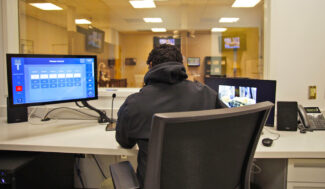 El sistema audiovisual es tan importante como el de simulación, ya que graba y envía por streaming los eventos de vídeo y audio de las sesiones de formación para su análisis y observación en tiempo real por instructores y estudiantes, y es lo suficientemente robusto como para soportar esta importante misión de formación, con un funcionamiento sencillo.
El sistema audiovisual es tan importante como el de simulación, ya que graba y envía por streaming los eventos de vídeo y audio de las sesiones de formación para su análisis y observación en tiempo real por instructores y estudiantes, y es lo suficientemente robusto como para soportar esta importante misión de formación, con un funcionamiento sencillo.
Para capturar todas las actividades durante los ejercicios de formación, cada uno de los cuatro espacios de simulación está equipado con una PTZ camera en la pared y un micrófono colgante beamtracking en el techo. Una matriz de conmutación DXP84 HD 4K Plus enruta vídeo HDMI desde las cámaras.
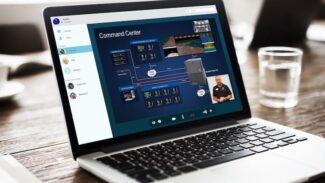 Los micrófonos de la sala de simulación, más el de la sala de control del instructor, transmiten a un sistema de distribución de audio digital que lleva a cabo el enrutado, además del procesamiento de la señal digital para dirigir la emisión acústica y la cancelación de eco acústico.
Los micrófonos de la sala de simulación, más el de la sala de control del instructor, transmiten a un sistema de distribución de audio digital que lleva a cabo el enrutado, además del procesamiento de la señal digital para dirigir la emisión acústica y la cancelación de eco acústico.
Dos de las salidas HDMI de la matriz de conmutación de vídeo conectan a un procesador multimedia para realizar streaming, con grabación dual SMP 352 desde dos salas de simulación simultáneamente, que recibe además audio analógico del DSP de audio.
Las grabaciones del procesador son reproducidas para su análisis y ayudar así a estudiantes e instructores a evaluar el rendimiento y aprendizaje, que se guardan en la memoria interna y en memorias flash USB.
Para un mayor realismo, solo el equipo TES de estudiantes que está presente en un rescate real es el que está normalmente en una sala de simulación cuidando a un ‘paciente’. Yes ok, las salidas de streaming del SMP 352 se pueden enviar a través de la red a las clases adicionales, o incluso a través de Internet por un códec de software como Zoom.
Visión en tiempo real
El sistema AV de la sala de simulación está equipado con seis pantallas planas de 55” (una de ellas ubicada en la clase adicional) que ofrecen a los observadores una visión general de la actividad sobre cada ‘paciente’ en cada espacio.
For example, en la configuración de la sala de estar, el dispositivo de visualización está encima de los pies del sofá en el que el ‘paciente’ está tumbado de espaldas. En la habitación se ubican dos pantallas, una por encima de la cama donde un maniquí adulto reposa y, la otra, por encima de una cuna en la que hay un maniquí niño.
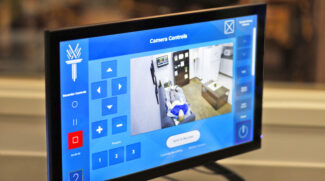 Los seis dispositivos de visualización muestran la misma emisión de cámara PTZ, según se selecciona en la sala de control. La matriz de conmutación enruta la salida de vídeo HDMI a un amplificador de distribución DTP HD DA8 4K 230, que extiende la señal a largas distancias a través de cable de par trenzado DTP a las pantallas, tras las cuales se ha instalado un receptor DTP HDMI 4K 230 Rx que convierte la señal de DTP a HDMI.
Los seis dispositivos de visualización muestran la misma emisión de cámara PTZ, según se selecciona en la sala de control. La matriz de conmutación enruta la salida de vídeo HDMI a un amplificador de distribución DTP HD DA8 4K 230, que extiende la señal a largas distancias a través de cable de par trenzado DTP a las pantallas, tras las cuales se ha instalado un receptor DTP HDMI 4K 230 Rx que convierte la señal de DTP a HDMI.
Para acompañar al vídeo mostrado en los dispositivos de visualización de 55”, los sonidos capturados por los roof microphones en las salas de simulación están enrutados a los altavoces de techo de las salas de simulación.
El procesador de control AV garantiza que el sonido que se escucha desde los altavoces pertenece a la misma sala que se está mostrando en los dispositivos de visualización, de manera que el enrutado de audio seleccione el micrófono de la misma sala de la cámara PTZ escogida en ese momento.
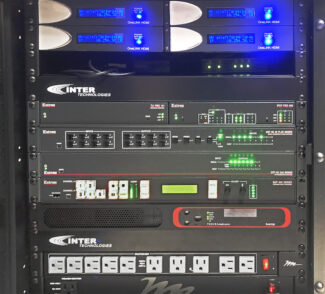 El sonido del micrófono seleccionado también se escucha en la sala de control a través de una pareja de altavoces SM 3, que funcionan por las salidas estéreo de un amplificador MPA 152 Plus, para recibir la entrada del DSP de audio.
El sonido del micrófono seleccionado también se escucha en la sala de control a través de una pareja de altavoces SM 3, que funcionan por las salidas estéreo de un amplificador MPA 152 Plus, para recibir la entrada del DSP de audio.
Desde la sala de control, los instructores y sus asistentes pueden controlar el sistema AV y ejecutar los escenarios de simulación desde una única posición de operador. Un ordenador portátil, colocado delante del instructor, hace funcionar el software de simulación de Laerdal Medical Corporation, creadores de los maniquíes médicos.
Este software puede utilizar escenarios de simulación previamente programados, o que el instructor active los maniquíes sobre la marcha, con ajustes de parámetros fisiológicos para iniciar las pautas y registrar las acciones.
A pantalla táctil de 24”, ubicada en el escritorio del instructor de la sala de control, se utiliza para controlar el sistema AV. El equipo de Wake Tech diseñó la GUI de control AV, mientras que el de Inter Technologies configuró el sistema de control utilizando Extron Global Configurator Professional.
Un procesador de control IP Link IPCP Pro 350 envía comandos a todos los componentes del sistema AV a través de un switch de red. La interfaz de usuario de control AV en la pantalla táctil se implementa a través de una unidad de interfaz TouchLink TLI Pro 101, para mostar el vídeo HDMI en directo desde las cámaras PTZ de la sala de simulación dentro de la GUI de control AV.
As he says Jennifer Unitis, responsable de informática académica en Wake Tech: “me alegra que la escuela es casi al 100% Extron, y que todos en el equipo AV tienen una o más certificaciones de este fabricante, cuyo equipo ha sido de una increíble ayuda asistiendo en el diseño de la sala de simulación de SEM con una solución que cumpliera con todos nuestros objetivos”.
You liked this article?
Subscribe to us RSS feed And you won't miss anything.
• Section: Audio, By conferencing, Study cases, Control, Display, Signal distribution, Formation, Production, Networks, Health, Simulation



